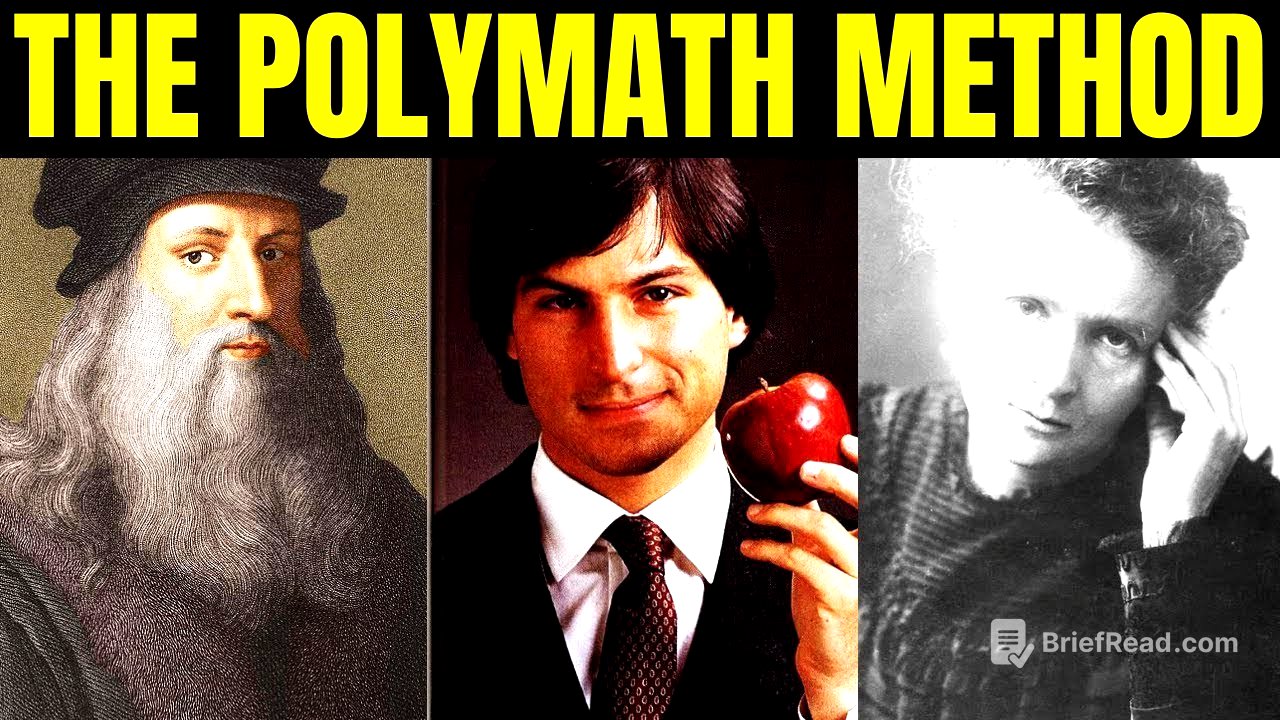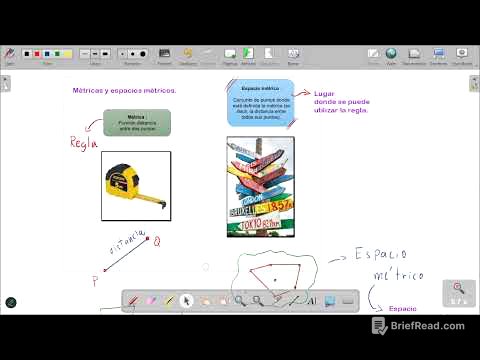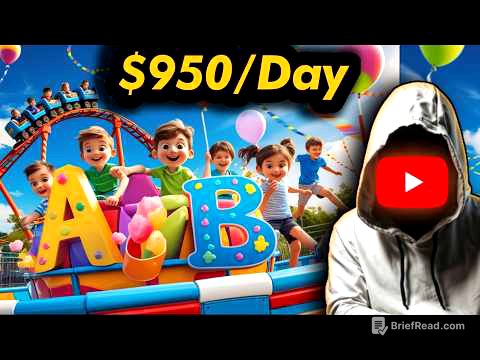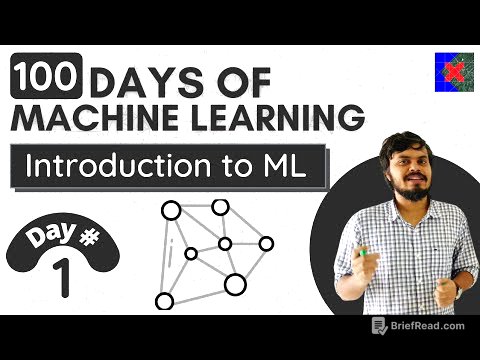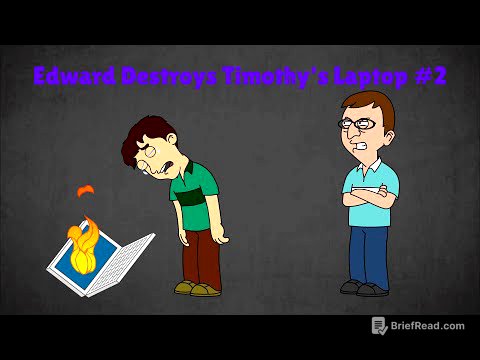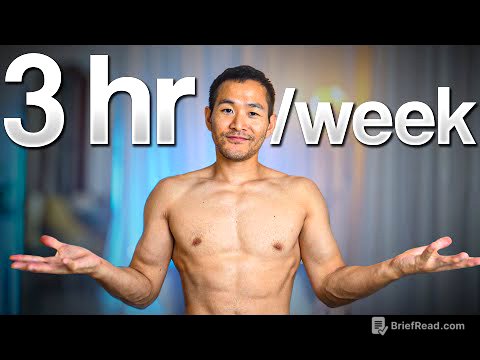TLDR;
This video challenges the common belief that failure is due to personal inadequacy, arguing instead that it often stems from flawed learning methods. It introduces the concept of deliberate practice, emphasizing the importance of intention, structure, and feedback in mastering any skill. The video also addresses the psychological barriers to effective learning, such as fear of failure, ego, and cognitive paralysis, and provides actionable steps to reprogram one's approach to learning and achieve mastery.
- Flawed learning methods, not personal inadequacy, often cause failure.
- Deliberate practice, with intention, structure, and feedback, is key to mastery.
- Psychological barriers like fear of failure and ego hinder effective learning.
- Overcoming cognitive paralysis and embracing physical engagement are crucial.
- Mastery requires consistent effort, self-reflection, and a willingness to embrace discomfort.
Introduction: The Lie You've Been Told [0:01]
The video begins by addressing the feeling of being inherently broken or inadequate, a sentiment many experience when facing repeated failures. It challenges the notion that individuals are simply not "enough" and introduces a counter-argument: people are often programmed to fail due to ineffective learning methods instilled since childhood. These methods include rewarding memorization over understanding, repetition over questioning, and valuing mechanical effort over genuine progress.
The Illusion of Progress [0:34]
The video highlights the frustration of putting in effort without seeing improvement, which it describes as a confidence-shattering "mirage of progress." It criticizes the normalization of this feeling, where individuals begin to believe they lack talent or innate ability. The core issue isn't an inability to learn, but a lack of proper instruction on how to learn effectively. Mastery is presented not as an innate gift, but as a system that anyone can learn.
The Painful Truth About Practice [2:23]
The video emphasizes that the amount of time spent practicing is irrelevant if the practice lacks intention, structure, and meaningful feedback. Such aimless practice only reinforces mediocrity. The problem isn't a lack of effort, but a lack of direction, which is far more dangerous. The video introduces the concept of deliberate practice as a solution, contrasting it with rote repetition without error correction, which it likens to a form of self-imposed imprisonment.
Talent as an Excuse [4:03]
The video challenges the notion of talent as an innate quality, arguing that it's often used as an excuse. The real reason for a lack of improvement is often a reluctance to embrace the discomfort and pain that comes with effective learning. The brain is wired to avoid pain, and true learning requires correcting mistakes, which can be a painful process. Many people prefer the comfort of familiar, ineffective practices, which ultimately hinders their progress.
Breaking the Cycle: The Path to Mastery [5:16]
The video asserts that there is a way to break the cycle of ineffective learning through a specific method or system. This system focuses on how one organizes their learning, confronts mistakes, and trains their mind to endure the discomfort of change. Learning is not about accumulating information but about dismantling old, ineffective ways of thinking and behaving. This process can be terrifying, but it's essential for growth.
The Enemy Within: Unapplied Knowledge [7:58]
The video identifies the greatest enemy of effective learning as oneself, specifically the part that sabotages progress when no one is watching. This includes the tendency to claim understanding prematurely, to collect knowledge without applying it, and to confuse information accumulation with genuine transformation. Unapplied knowledge is described as a "slow poison" that inflates the ego and leads to a disconnect between theory and execution.
Humility and the Embrace of Error [11:17]
Deliberate practice requires humility, accepting that one doesn't know everything and that initial execution will be clumsy. Learning for real involves "killing" the ego daily, as the ego resists mistakes. Mastery is built upon dissected errors, documented failures, and conscious rebuilding. Making mistakes is not just human but mandatory for learning; pretending to learn without mistakes is "inhuman."
Failing with Intention [12:32]
The video addresses the fear of failure, often instilled from a young age, and argues that it prevents individuals from pursuing the path to mastery. It's not about failing for the sake of failing, but about failing in a controlled, conscious way, with data, reflection, and honesty. Every mistake is a clue, and collecting these clues allows one to create a map for faster progress.
The Mirror of Error [14:05]
The video introduces the concept of the "mirror of error," emphasizing the importance of giving the brain clear feedback on its mistakes. This involves recording oneself, analyzing performance, receiving feedback, and comparing oneself to a real reference. While this process can be uncomfortable, it's transformative. The video points out that even with the necessary tools, pride can sabotage progress if one hasn't understood that becoming a master requires first being an "idiot" and owning it.
Actionable Steps and the Daily War Against Comfort [15:55]
The video urges viewers to apply what they've learned within the next 24 hours, starting with just one thing. The formula is simple: do it badly, analyze, correct, document, and repeat. Deliberate practice is a daily war against comfort, and the reason so few people achieve excellence is that this war must be won every day with effort, frustration, precision, and unwavering determination.
The Nature of Mastery and the Trap of Cognitive Paralysis [16:40]
Mastering something doesn't feel epic or glorious; it feels like waking up one day and realizing that thinking and forcing are no longer necessary. The change comes not from within the individual, but from the system they've adopted. The video then shifts to the issue of cognitive paralysis, where individuals are mentally hyperactive but physically immobile, leading to a false sense of productivity.
From Mind to Body: Overcoming Simulation Bias [19:40]
The video emphasizes the importance of moving from the mind to the body, from thought to action. Clarity comes after acting, not before. Waiting to understand everything before taking the first step is a mistake. The video introduces the "simulation bias," where the brain simulates action and rewards the individual with dopamine, leading to a feeling of accomplishment without any real action.
The Physiology of Learning [21:24]
The video discusses the physiology of learning, highlighting how posture, breathing, and micro-body habits affect the learning process. The body tells the brain whether something matters, and if the body isn't involved, the mind doesn't retain information. Learning is a complete state involving mind, body, and emotion aligned in one direction.
Learning from Curiosity, Not Shame [23:45]
The video addresses the motivation behind learning, noting that many learn to escape themselves, driven by self-hatred. However, what is born from self-hatred never thrives. Instead, one should learn from curiosity, play, and a hunger to explore. If learning is contaminated by the need for validation, it will be abandoned as soon as the applause stops.
The Formula of Awakening and the Dismantling of the Self [26:07]
The video transitions to a proposal: to completely dismantle one's way of learning, thinking, and training. This involves uprooting the "lukewarm identity" built on excuses and incomplete knowledge. Changing one's way of learning isn't just changing the mind; it's changing one's story and walking toward an unknown self.
The Vertigo of Mastery and the Final Trap: Boredom [27:40]
Mastery doesn't feel like power but like vertigo, as one becomes responsible for what was once called destiny. The greatest enemy of mastery isn't failure but boredom. As progress becomes silent and invisible, many fall because they seek excitement, not excellence. Mastery is repetitive, monotonous, and technical, and only those who love the process above the result survive.
Conclusion: Mastering Yourself [29:43]
The video concludes by asking if the viewer has what it takes to love the boring part of the journey. If one can fall in love with conscious repetition, uncomfortable correction, and invisible practice, they already have what they need. By applying what they've learned, they won't just master a skill but master themselves. The video ends with a call to action, asking viewers to leave the comment "I master because I fail" as a code to show they were present and that something within them has awakened.
